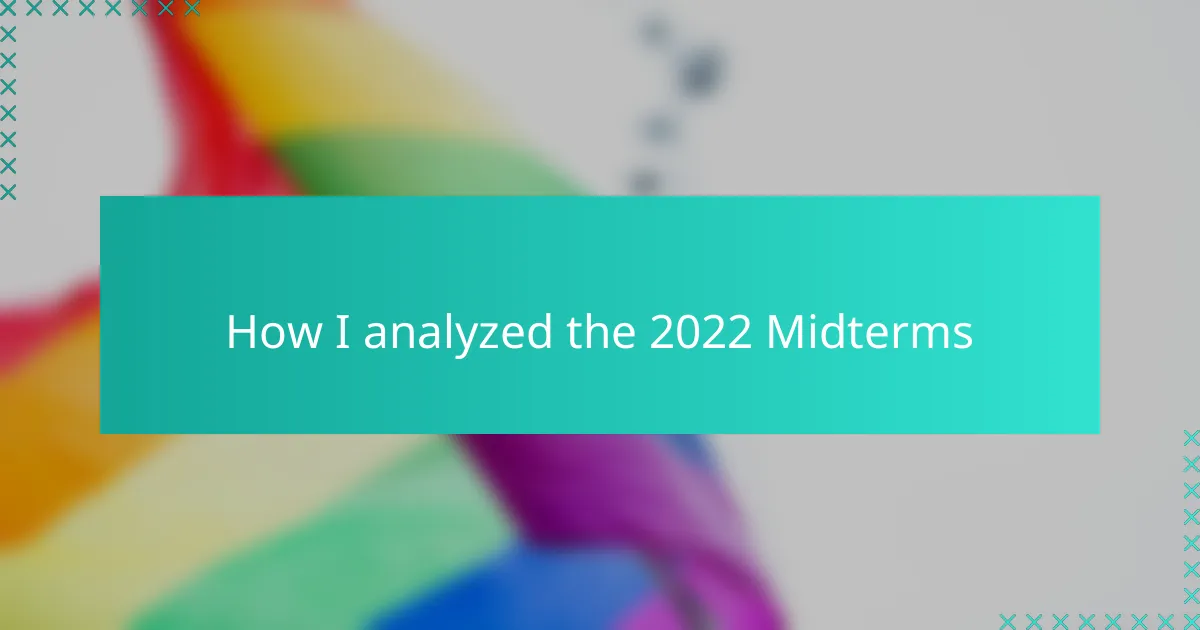Key takeaways
- Global politics analysis requires balancing data with empathy to understand the deeper motivations behind political events.
- The 2022 Midterm elections illustrated the growing polarization within political parties and a shift in engagement among younger and diverse demographics.
- Utilizing modern tools like social media sentiment analysis and GIS mapping is essential for capturing real-time voter moods and geographic trends.
- Local issues and personal experiences significantly influence voter behavior more than traditional party loyalty, emphasizing the need for adaptive analysis methods.

Introduction to Global Politics Analysis
Global politics analysis is more than just tracking events on a world map; it’s about understanding the intricate web of decisions, power dynamics, and cultural contexts that shape our shared future. I remember the first time I truly grasped this—it felt like peeling back layers of a complex story where every character’s motivation mattered.
Have you ever wondered why a seemingly local election causes ripples across continents? That question sparked my journey into global analysis, pushing me to look beyond headlines and explore the deeper forces at play. It’s both challenging and rewarding to connect those dots, making sense of how diverse political actions influence each other on a global scale.
In my experience, the key to insightful analysis lies in balancing data with empathy. Numbers tell part of the story, but understanding human ambitions, fears, and hopes gives depth to the political narratives I study. This approach transforms raw information into meaningful perspectives that resonate not just intellectually, but emotionally as well.
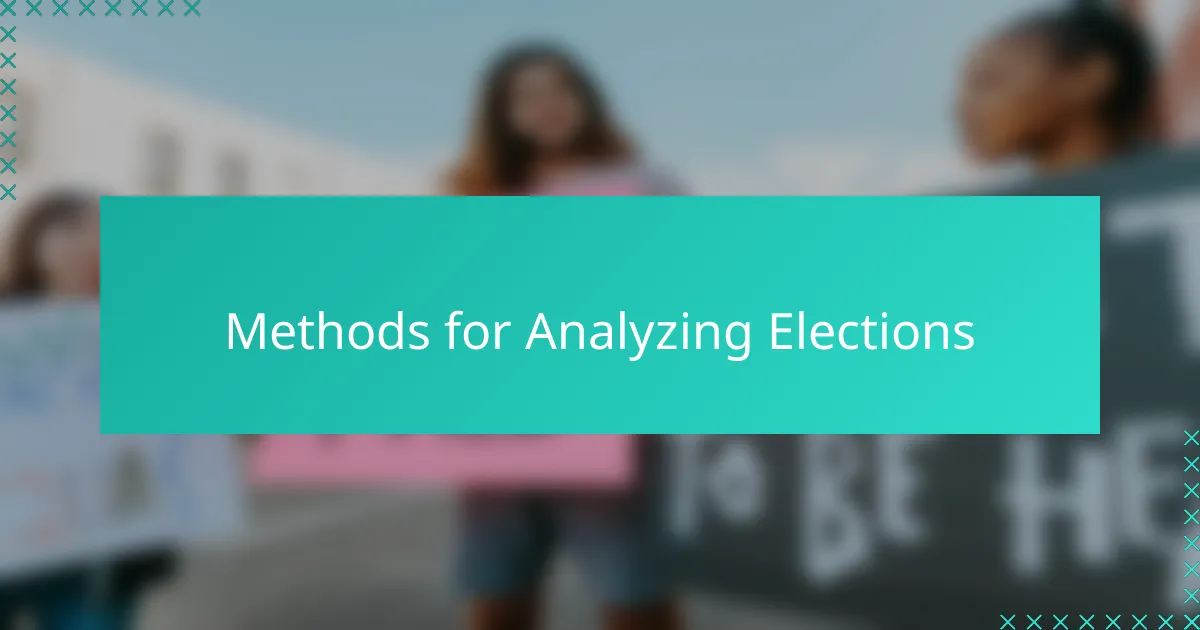
Methods for Analyzing Elections
When I first started analyzing elections, I leaned heavily on data—voter turnout, demographic shifts, and past voting patterns. But soon, I realized that numbers alone only scratched the surface. So, I began combining quantitative data with qualitative methods like scrutinizing candidate speeches and media framing to uncover the subtle narratives shaping voter behavior.
One method that really changed my approach was conducting sentiment analysis on social media reactions. Watching real-time public emotions and conversations gave me a window into the electorate’s mood, something no poll numbers could fully capture. Have you noticed how a viral debate moment can sway opinions overnight? That’s the kind of immediacy social media analysis reveals, adding depth to traditional election studies.
I also found it crucial to contextualize local elections within broader political trends. By comparing regional results with national and even global movements, I could spot patterns and disruptions that weren’t obvious at first glance. This multidimensional lens helped me understand not just who won, but why their victory mattered in the larger political landscape.
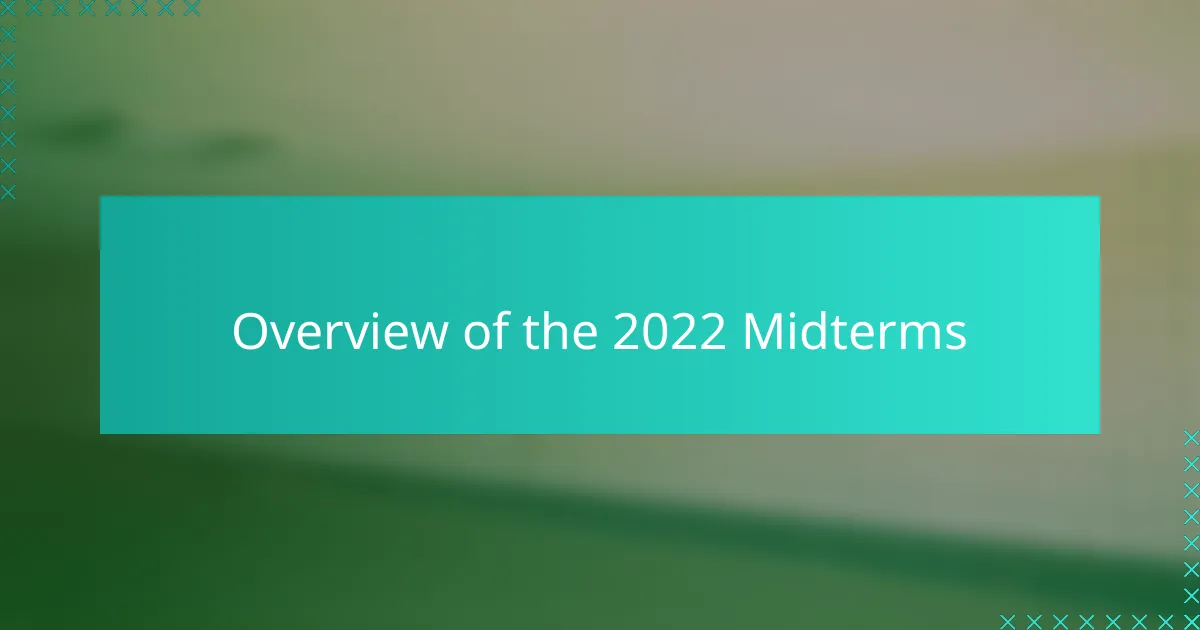
Overview of the 2022 Midterms
The 2022 Midterm elections unfolded at a pivotal moment, reflecting a nation grappling with economic pressures, social issues, and shifting political identities. Watching the results trickle in, I felt the familiar rush of anticipation mixed with a deeper curiosity about what these outcomes signaled beyond the ballot counts. Have you ever wondered how midterms serve as a barometer not just for domestic policy but for the country’s role on the global stage?
What struck me most was the uneven voter turnout and how it mirrored growing divisions within the electorate. This wasn’t just about one party gaining seats or another losing ground—it was a glimpse into the evolving priorities and frustrations of everyday people. Analyzing these patterns made me think about how local concerns ripple into international perceptions, influencing diplomatic relationships and foreign policy calculations.
The gains and losses in Congress highlighted more than just political power shifts; they pointed to underlying cultural and ideological currents, some old, others emerging in unexpected ways. I found myself asking, what does this mean for America’s future direction? And how will these internal dynamics shape its interactions with a complex, interconnected world? These questions kept me digging deeper, moving beyond headlines to the nuanced realities these midterms revealed.

Key Political Trends Identified
One trend that stood out to me was the growing polarization, not just between parties but within them. It felt like watching familiar allies quietly distance themselves, each faction pulling the political conversation in different directions. Have you ever noticed how this internal division can be just as impactful as outright opposition?
Another significant pattern was the decline in traditional voter turnout juxtaposed with surges among younger and more diverse demographics. This shift made me reflect on the changing face of political engagement—are we witnessing a new generation’s redefinition of activism and participation? The enthusiasm in certain pockets contrasted sharply with apathy in others, revealing a complex electoral mood.
Finally, I couldn’t ignore the resurgence of localized issues shaping national outcomes. It was clear that voters were responding intensely to immediate concerns—whether economic anxiety or cultural identity—rather than broad ideological narratives. This reminded me of how politics is ultimately personal, grounded in the everyday realities that politicians often overlook.
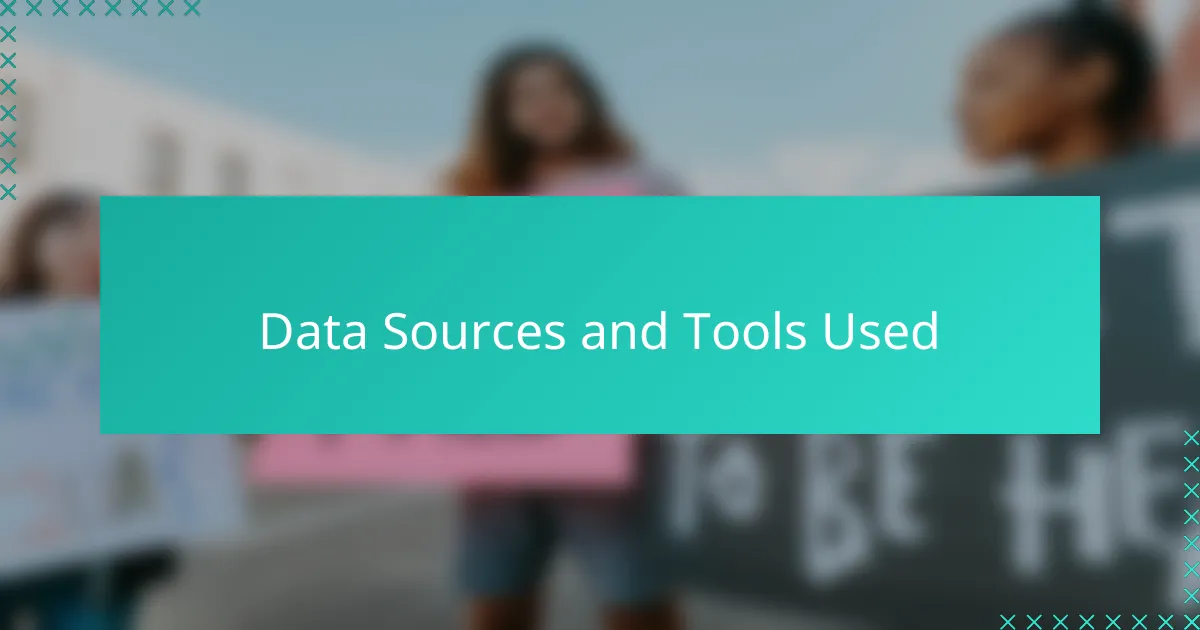
Data Sources and Tools Used
To unravel the complexities of the 2022 Midterms, I relied heavily on official election data from the Federal Election Commission, which offered a solid foundation for understanding raw vote counts and turnout statistics. But numbers alone didn’t satisfy my curiosity—I also tapped into real-time social media datasets through tools like Brandwatch to capture the electorate’s evolving sentiments and viral moments that shaped the discourse. Have you ever wondered how much a single trending hashtag or tweet can shift the narrative overnight? Tracking these digital pulses added an immediate and human dimension to the election night drama.
In terms of analytical tools, I found GIS mapping software incredibly useful for visualizing voting patterns regionally and nationally. Mapping the data revealed subtle geographic shifts that wouldn’t be obvious if I stuck to spreadsheets alone. Alongside that, applying natural language processing algorithms helped me sift through thousands of news articles and candidate speeches to detect recurring themes and framing techniques. This blend of spatial and textual analysis felt like having both a bird’s-eye view and a deep dive simultaneously—an approach that brought the election results to life in ways pure numbers never could.
Finally, I integrated historical election archives and polling data to provide context and see how 2022’s outcomes aligned or diverged from past trends. Drawing on these sources reminded me that while every election has its unique pulse, patterns often emerge that tell a larger story about political moods and shifting allegiances. Reflecting on this made me appreciate how crucial it is to balance fresh data with historical perspective to truly grasp the significance of any political moment.

Personal Analytical Approach
When I first approached the 2022 Midterms, my mindset was a blend of skepticism and curiosity. How could I avoid the trap of confirmation bias while still trusting my instincts? To tackle this, I made it a point to cross-check my initial impressions with diverse data points and perspectives, which, honestly, kept me humble and open throughout the analysis.
I tend to favor a layered approach where raw numbers meet narrative context. For example, while reviewing voter turnout rates, I always try to imagine the individuals behind the statistics—their hopes, frustrations, and what might have motivated their choices. This human dimension often reveals much more than any chart or graph could convey alone.
Have you ever noticed how revisiting the same data from different angles enriches your understanding? I found myself revisiting social media reactions, local news, and historical patterns multiple times. This iterative process not only sharpened my insights but also kept me emotionally engaged, turning analysis into a more dynamic and personal journey.
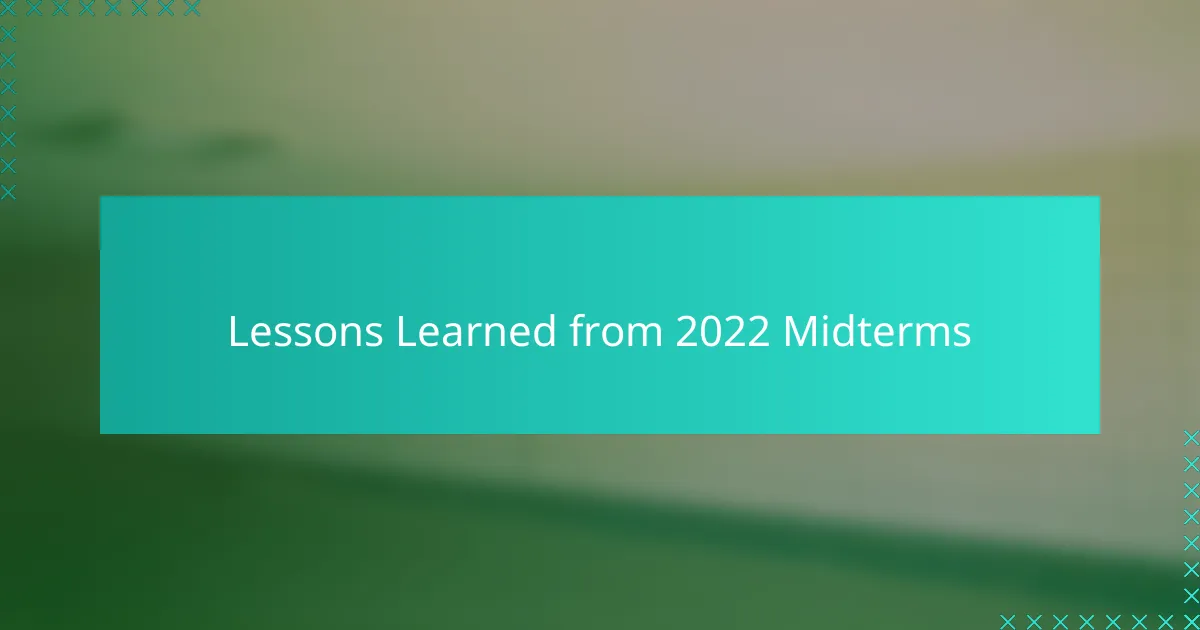
Lessons Learned from 2022 Midterms
One lesson that stuck with me from the 2022 Midterms was how unpredictable voter behavior can be, especially when local issues overshadow national narratives. I was surprised to see how much economic anxieties and cultural identities influenced outcomes more than party loyalty. Have you ever thought about how these on-the-ground realities can alter the expected political script? It reminded me that politics is rarely just about ideology—it’s deeply personal.
Another key insight was the impact of uneven turnout. Watching the numbers shift between demographics made me realize how crucial engagement is in shaping political power. It’s frustrating yet fascinating to see how lower overall turnout can amplify certain voices while silencing others. This raised questions for me: How can analysts and policymakers better understand and address these participation gaps? Reflecting on this helped me appreciate that raw data only tells part of the story; the human factors behind it are just as vital.
Finally, the midterms taught me the importance of adapting analysis methods to capture modern political dynamics. Using social media sentiment alongside traditional data wasn’t just a neat experiment—it became essential to grasping the electorate’s mood in real time. I found myself asking, could I have predicted shifts without this digital pulse? This experience highlighted how evolving tools can deepen our understanding of elections and, by extension, global political trends.
